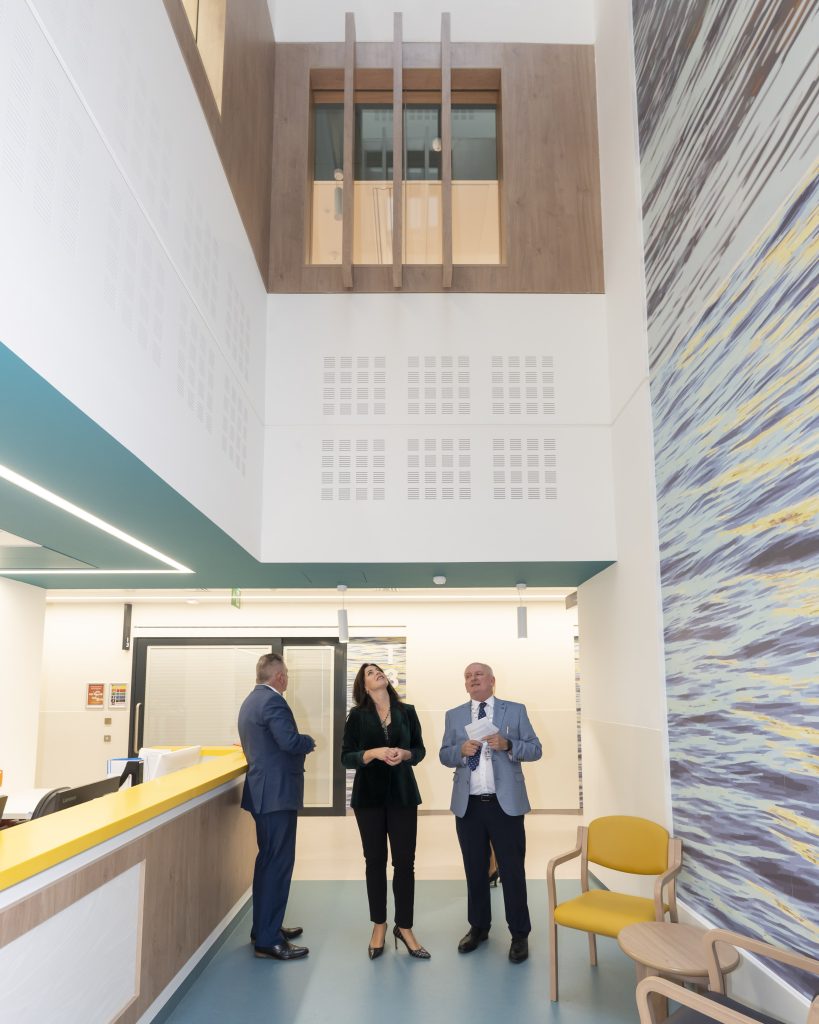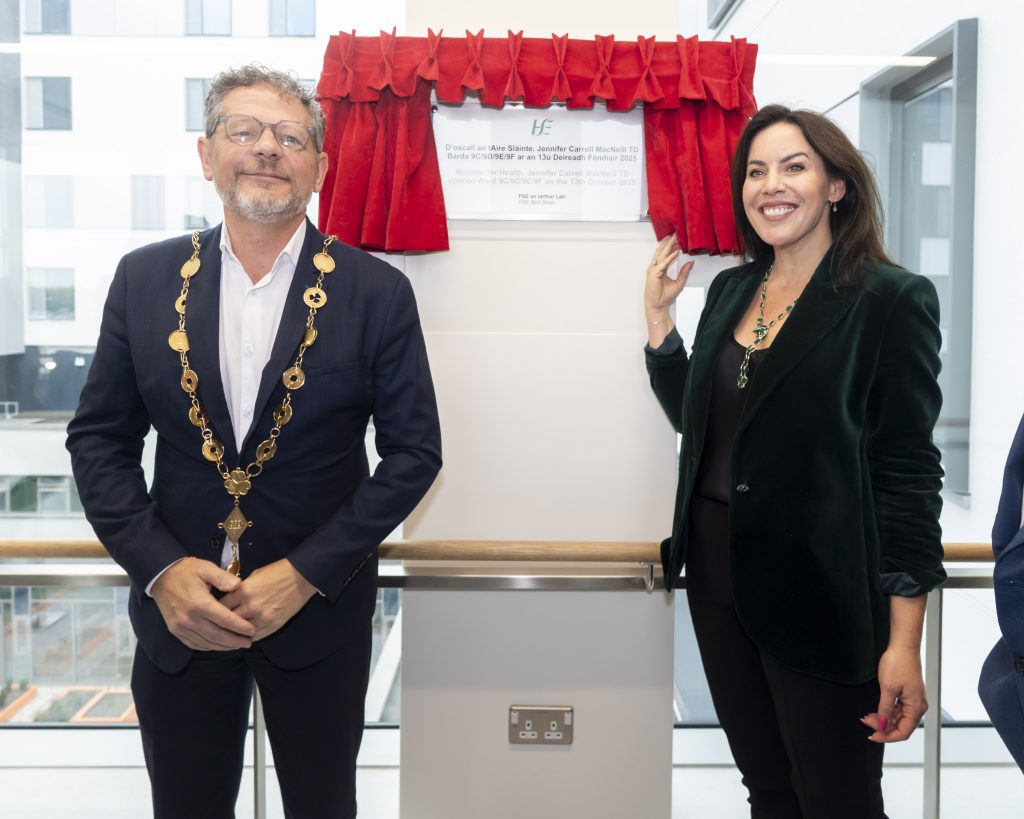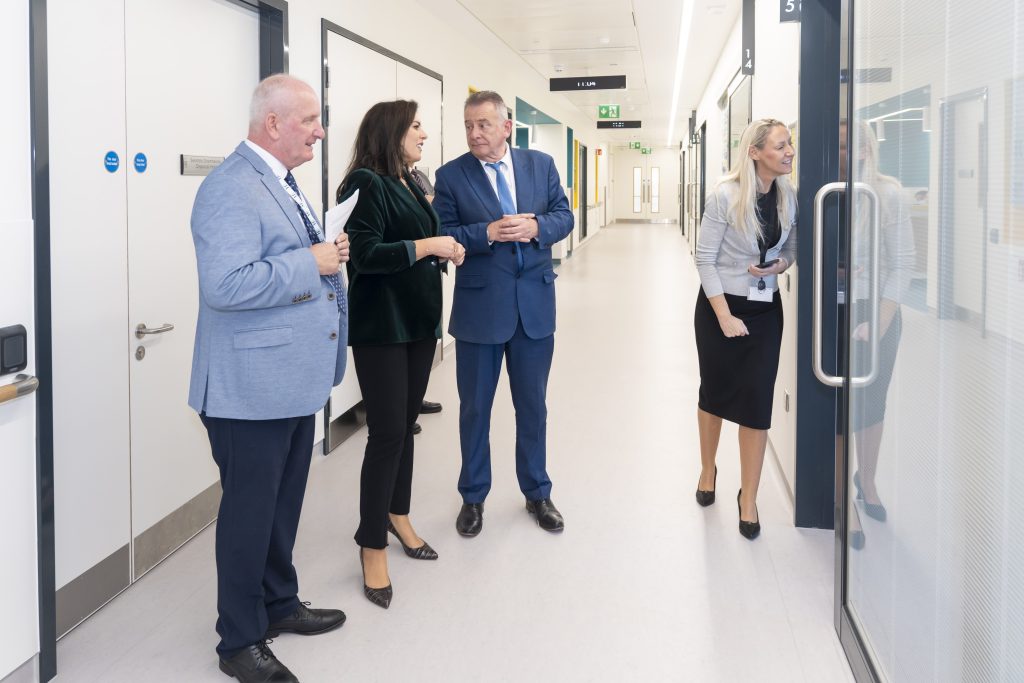Minister for Health Opens €105 Million 96-Bed Block at University Hospital Limerick
Ireland’s largest HSE capital project of 2025 delivers 96 single en-suite rooms, modern technology, and improved patient flow for the Mid-West.
Minister for Health Jennifer Carroll MacNeill TD has officially opened the new 96-bed block at University Hospital Limerick (UHL) — the largest capital development delivered by the HSE this year.
At a cost of €105 million, the 6,700 m² facility represents a major milestone in addressing the Mid-West’s bed-capacity deficit, as highlighted in HIQA’s recent review of urgent and emergency care in the region.
A landmark development for the Mid-West
The new block, physically linked to UHL’s critical-care facilities, provides four storeys of 24 single en-suite rooms, bringing the hospital’s total inpatient capacity to 650 beds.
Each ward has been purpose-designed for a specific clinical focus — two for older persons, one renal, and one trauma — with infection-prevention measures embedded in every design detail. Every room features mechanical ventilation, in-built hoists, and fully integrated digital systems for patient monitoring and safety.
Rooms are grouped in clusters of eight, each supported by a central nursing station. All have external views — either across Limerick city or overlooking landscaped courtyards — maximising natural light and ventilation to enhance patient wellbeing.
The development includes bariatric, isolation, and accessible rooms on every floor, as well as dedicated family areas and meeting rooms to support patient-relative engagement.
€3 million equipping programme
A €3 million equipment and technology programme has delivered cutting-edge facilities to every ward, ensuring clinicians can access real-time data and digital records at the bedside. The enhanced infrastructure supports the hospital’s ongoing work to improve patient flow, allowing the redesignation of two new medical wards within the wider hospital network.
Workforce expansion
Nearly 400 additional staff (whole-time equivalents) are being recruited for the new unit, the majority of whom are already in post.
Minister’s remarks
Speaking at the opening, Minister Carroll MacNeill described the project as “a testament to Ireland’s commitment to modern, patient-centred hospital care.”
“I am delighted to officially open Block A — the first of two new 96-bed blocks at UHL. These beds are vitally needed, not only for Limerick but for the entire Mid-West region.
By 2031, an additional 572 inpatient beds will be delivered, representing an 82 percent increase in capacity. Since 2019, UHL’s budget has grown by 91 percent, and by 2028, the hospital’s bed numbers will have more than doubled compared to 2020.
This Government is fully behind the staff of UHL, and we will continue to invest to ensure patients receive safe, high-quality care.”
Delivered through partnership
The project was managed by HSE Capital & Estates and built by John Sisk & Sons, with more than 950,000 man-hours contributed since late 2022.
The design consortium included:
O’Connell Mahon Architects / Kevin Jackson Architects (JV)
Varming Consulting Engineers
Arup Consulting Engineers
Lawlor Burns Quantity Surveyors
Aegis Safety Management
Maurice Johnston & Partners Fire Safety Engineering
Tom Phillips + Associates Town Planning Consultants
Leadership perspectives
Sandra Broderick, Regional Executive Officer, HSE Mid West, said the project symbolises hope and progress:
“This new block is much more than bricks and mortar — it represents hope for patients who deserve timely access to care, and for staff who have worked tirelessly to make it possible. Delivering 96 new beds — almost half the size of an entire Model 3 hospital — is a remarkable achievement, realised despite a pandemic, supply-chain challenges, and the pressures of Ireland’s busiest Emergency Department.”
Ian Carter, CEO, Acute & Older People Services, HSE Mid West, noted the significance of the development for patient flow:
“UHL has long operated above optimal capacity, impacting both patient experience and staff workload. By adding capacity and improving processes, we can now introduce specialty cohorting, enable more efficient allocation of staff, and enhance discharge planning. The new environment will particularly benefit our older patients, who are most at risk from prolonged admission delays.”





